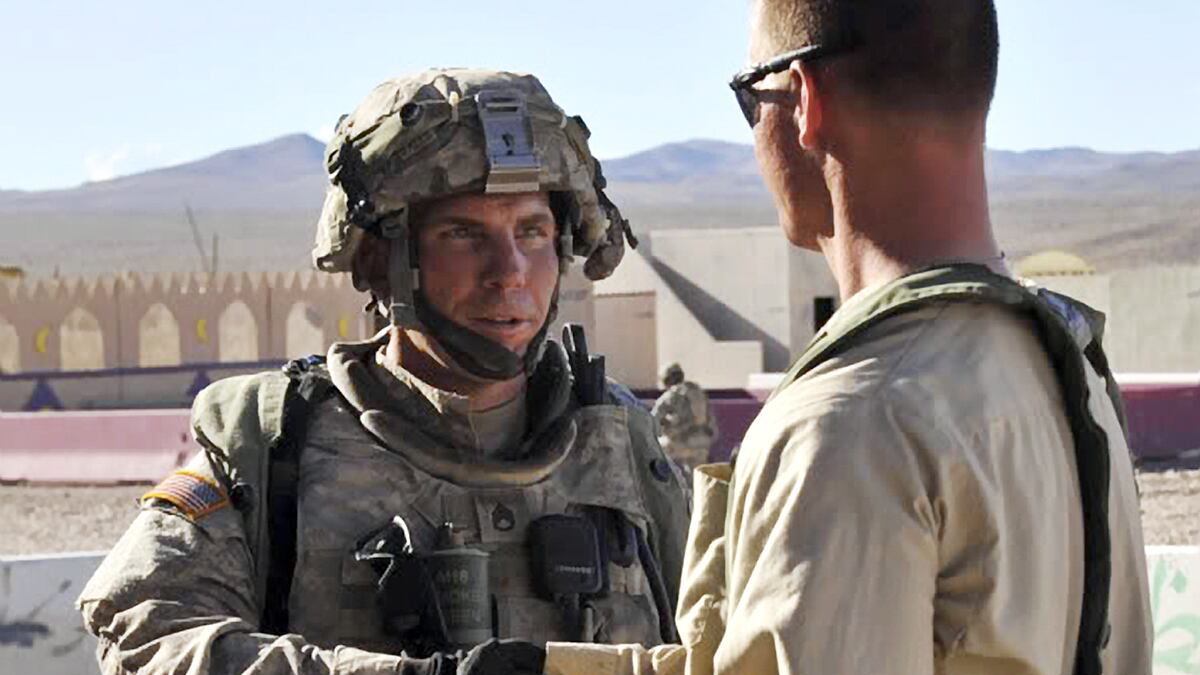Last week, as American officials scrambled to repair diplomatic relations with Afghanistan following the horrific mass murder of 16 Afghan citizens by a U.S. soldier, the search for answers as to why the massacre occurred had already begun.
“He just snapped,” a high-ranking official told The New York Times on Thursday. “When it all comes out, it will be a combination of stress, alcohol, and domestic issues.”
It feels like an insufficient explanation for such a shockingly senseless act. The soldier, a father of two young children, allegedly targeted women and children in his rampage and, after killing them, set some of their bodies on fire. But for some—including the family of the suspect—the explanation wasn’t just inadequate, it was unfair. “I know for a fact that there is no issue with his marriage,” the suspect’s attorney, John Henry Browne, told reporters. “It’s a very strong marriage, and frankly we’re all taking offense at that.”
When the suspect’s name was leaked on Friday—he is, reportedly, 38-year-old Staff Sgt. Robert Bales, from Joint Base Lewis-McChord in Washington state—a fuller picture began to emerge. Bales and his wife, Karilyn, appear to have been under financial duress. Their house, about 20 minutes from the base, was reportedly put up for sale the day after the shootings, listed at $50,000 less than the purchase price. Karilyn’s blog, meanwhile, talked of disappointment at her husband’s being deployed to Afghanistan after being injured twice during his three tours in Iraq.
But there’s been no telling detail or particularly damning piece of information. Instead, what’s emerged is a picture of a marriage under the kind of stress that is all too typical for modern military households.
Repeated deployments are a strain on not just soldiers, but their spouses as well, says Keli Lowman, whose husband served two tours in Afghanistan and sustained a traumatic brain injury during a tour in Iraq. “The yo-yo effect of them coming home and leaving again is detrimental to families,” she says.
When her husband first deployed, she says she was “sent into this turmoil where nothing is as it was before.” She was left to raise their 3-year-old daughter as a single parent and was suddenly tasked with managing all of the family finances—no easy job given how much military salaries can fluctuate. Salaries become tax-free during deployment, she explains, and consequently, “it’s very easy to start living outside of your means.” Forty-two percent of active-duty responders to a recent Military Times survey said that they were worried about their personal finances.

Between the financial strain and the difficulty of long separations, it’s hardly surprising that divorce rates within the military last year were higher than they’d been since 1999. More troublingly, according to an Army report released in January, domestic violence has risen by more than 30 percent since 2006, and rates of alcohol abuse are at record levels. There is some evidence that the stigma surrounding mental health is dissipating—more than 280,000 troops sought out behavioral treatment in 2011—but Lowman believes it has yet to disappear altogether. “We view military—and they view themselves—as these macho guys,” Lowman says. “It is a sign of weakness if you have any altered thoughts. It’s very hard to say, ‘Maybe I have a problem.’”
Now the outreach director for an organization called Not Alone, which helps provide confidential support for veterans and soldiers impacted by combat stress and posttraumatic stress disorder, Lowman says only one thing surprised her about Bales’s alleged attack. “Most people in his situation commit suicide,” she says, “not mass murder.”
Indeed, the suicide rate for active-duty soldiers has been higher than that for civilians since 2008, and last year it hit an all-time high. In 2010 Lowman was contacted by a woman who had discovered that her husband had fallen behind on mortgage payments and their home was going to be foreclosed on. She called him in Iraq to confront him, and he committed suicide, hoping that the payout from his life-insurance policy would be enough to save the family from losing their home. The specifics—financial distress, marital tensions—are chillingly similar to some of what has been suggested led to Bales’s alleged killing spree. “How would she have possibly known that this was going to be the result of ‘We’re having financial trouble’?” Lowman says of Bales’s wife. “How is she feeling now that her life is under so much scrutiny? There’s worldwide attention on her now. She has a 3- and 4-year-old to protect.”
It’s always tempting to find something or someone to blame for tragedies like these, but the question of whether it was marital or combat stress that pushed these soldiers over the line is often unanswerable. The two are inextricably linked. As Heather Sweeney put it in a column she wrote for The New York Times’ website, “It’s impossible to determine if military life was the cause of my marital issues or if it was simply a contributing factor. I have no idea if my husband and I would have the same struggles if he hadn’t pursued a career in the military. But even if the military wasn’t the direct cause, it certainly didn’t help.”
Given the way some of these situations have played out, causality hardly seems important. On Feb. 3, someone calling herself Anna posted in the anonymous forums hosted by Not Alone. She detailed her husband’s depression following two deployments and the loss of his leg. “I love my husband very much and it is killing me to see him hurting so much. I feel so helpless right now,” she wrote. “I am so afraid of what he might do to himself or someone else.” She hasn’t posted in the forum since.






